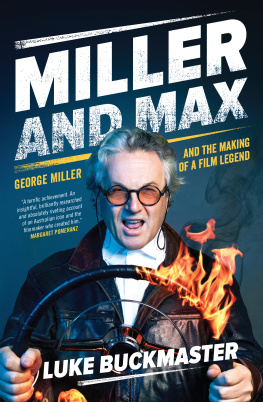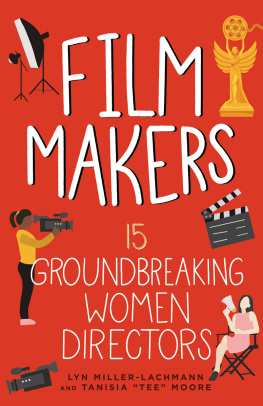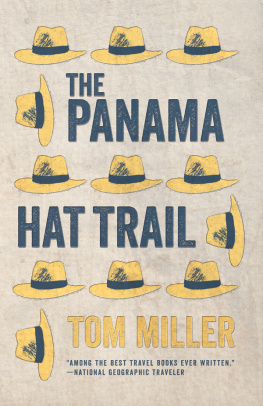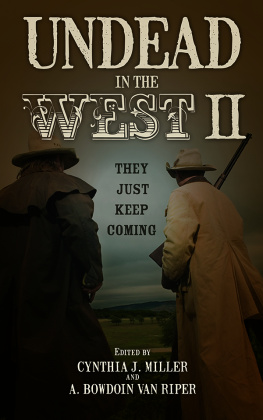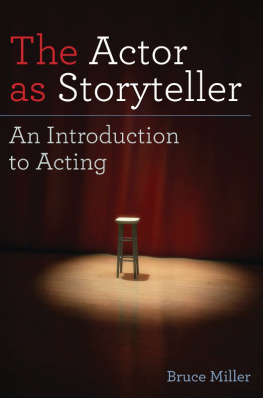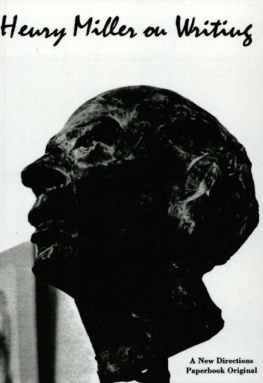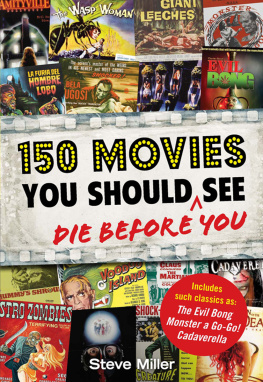To my beloved Rose, who never imagined she would ever read so much about stunts, explosions and fast cars.
CONTENTS

T HE FILMMAKER GEORGE MILLER told me over the telephone in 2015, during an interview conducted for The Guardian, I think all stories should come with a warning: hazardous material. I wonder how that relates to the story of his own life, including his most famous workthe extraordinary Mad Max movies. Perhaps it should come with an additional warning: Dont try this at home.
On these pages you will read stories so sensational youd be forgiven for thinking they were made up. I assure you they were not. Certainly at first blush some things may not appear to make a great amount of sense, including the paradox at the heart of George Millers career, and this book. An obviously sensible, softly spoken man became a medical doctor in his thirties, saving lives in the emergency room and tending to victims of roadside trauma. The same person went on to become an artist celebrated in part for filming violent, bone-rattling stunt sequences that by anybodys definitionincluding his ownare incredibly dangerous.
But one thing is undisputed: we can be grateful that George Miller stopped writing medical scripts in the 1970s and started focusing on very different sorts of scripts. That gratitude may admittedly be superseded by what one might feel toward a medical professional who hooked you up to life support just in the nick of time, sure, but heythe world needs great art. Thats exactly what Miller gave us when he put down his stethoscope and picked up a camera.
The Mad Max movies are far from optimistic visions of the future of the human race (the words hell in a handbasket come to mind) but one has no choice but to feel their spiritit smacks you in the face like a gust of hot air. Core to the movies is a feeling, which I have no doubt comes from the filmmaker himself, that even in the darkest times humanity has something worth fighting for.
For a person like me, a critic with a particular soft spot for American and Australian cinema, George Miller is not just a rarity but a completely unique figure in the filmmaking landscape. His movies have the scale and spectacle of Hollywood and a cavalier, fume-drunk spirit that is quintessentially Australian. I am specifically speaking of the Mad Max movies; although Millers body of work extends beyond them, they are the focus of this book.
To say that the tyre-streaking adventures of the Road Warrior have permeated every area of popular culture feels a little like stating the obvious. Many words have been written exploring how the ubiquitous Max Rockatanskys influence pops up everywhere, in far too many places to namefrom films to television, music, literature, fashion, video games, comic books, toys and who knows what else. Since charging into cinemas in 1979, Mad Maxs impact has spread to all corners of the globe. There are few phrases in the English (or any other) language that trigger such immediate familiarity. Mad Max in that sense is comparable to McDonalds or Star Wars.
Over the months I spent writing this book, I made a note of every time I stumbled upon those wordsMad Maxin a context unrelated to my research. Heres what I made note of:
In the US, a report issued by the Pentagon described new cars created by ISIS terrorists in Iraq as reminiscent of a Mad Max vehicle. In northern Syria, the Kurdish military converted tractors and lorries into tanks that we were told were straight out of the second Mad Max movie. In South Korea, a government website tracking fertile women was shut down amid claims it was reminiscent of Mad Max: Fury Road. In Canada, a conservative MP and contender for leader of the Conservative Party controversially boosted his profile by distributing images of himself as Mad Max.
In London, fashion designer Vivienne Westwood hosted a Mad Maxthemed party to raise money to combat climate change. In Victoria, Australia, Mad Max aficionados planned a pilgrimage from the location of the first movie to the location of the secondwhere they would congregate at the Mad Max museum in Silverton, New South Wales.
In Seattle, Uber introduced a Mad Maxthemed promotion: free car rides in futuristic-looking vehicles (because dollars are worthless in the wasteland). In Japan, students at Tama Art University dressed up as characters and built replicas of vehicles for a Mad Maxthemed graduation ceremony. In China, a Mad Max rip-off called Mad Shelia made the rounds. I had to stop jotting these occurrences down; there was simply too much Mad Max.
In my mind there is no question George Miller is the most influential Australian artist of the twentieth century. Who could compete with his reach, and his ongoing relevance? Given Australia was founded only a couple of hundred years ago, that also makes Millerthe son of Greek and Turkish migrantsthe most influential Australian artist in history. How gloriously Australian that perhaps our greatest contribution to humanitys artwork comes in the form of batshit crazy car movies.
How did the director achieve so much? This book will tell you. To paraphrase The Beatles: we get by with a little help from our friends. One in particular proved crucial to the story of how a boy from the small country town of Chinchilla made his mark on the world. To that end, I owe a debt of gratitude to the family of the late Byron Kennedy. I have been touched by their generosity and am honoured to sharealongside the story of Millera long overdue, detailed account of Kennedys legacy.
Can any person who is reminded day in and day out of their talent remain humble, or down to earth? Insofar as that is possible, I believe George Miller has achieved it. I draw this conclusion not just from an enormous amount of research (including reading thousands of articles and watching hundreds of hours of footage) but also my own interactions with the filmmaker, through very long phone conversations. During one of them Miller apologetically declined to be interviewed for this book. Time is a precious commodity for all of us, and there was just no getting around the fact that participating in this project would consume his.
The seventy-nine interviews I conducted for this project exposed me to an extremely colourful array of personalities. If I had to name something all my interviewees shared, it would be a belief that these storiesthe tales of how the Mad Max movies were madeare valuable, and somebody ought to write them down.
The person I am most grateful to, of course, is George Miller. The director has never been much of a believer in the supposed divide between high and low art. Neither have I. The greatest motion pictures are almost never the sort that leave audiences scratching their heads, or feeling they have been out-intellectualised by the creators. They are films that tap into universal storytelling concepts, which began when our ancestors drew pictures on the walls of caves. These films, such as Mad Max, transcend class and even language.
In this instance they have explosions. They have gunfire. They have automobiles that propel forward at face-melting speeds. They have freaky costumes and gnarly homemade weapons. And they have warriors.
One of them is Max Rockatansky, the iconic former highway cop played by Mel Gibson first and Tom Hardy later. Another is George Miller, the boy from Chinchilla. A man of great strength, talent and tenacity. As you will discover in this book, he is no stranger to struggling. No stranger to fighting. And certainly no stranger to triumph.

